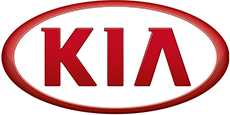







The onboarding process - the key to a successful start for new employees
What is the onboarding process?
The onboarding process describes the structured and systematic approach to introducing new employees to a company. The goal is to make the onboarding process as smooth as possible so that new employees can settle in quickly and work productively. An effective onboarding process goes beyond mere training – it includes communicating company values, goals, culture, and social aspects.
Onboarding Importance – Why is the onboarding process so important?
The importance of the onboarding process lies in its significant contribution to the long-term retention and productivity of new employees. A well-thought-out and structured onboarding process promotes:
- Faster integration: New employees understand how the company works and what tasks they are expected to perform more quickly.
- Employee retention: A positive onboarding experience increases satisfaction and reduces turnover.
- Increased productivity: Well-trained employees become productive more quickly and contribute efficiently to the company's success.
- Cultural adaptation: The onboarding process conveys the company's values and culture, which helps new employees adapt and integrate into the team.
The Onboarding Process Phases – Structure for Successful Onboarding
A successful onboarding process consists of several phases that are systematically completed. These onboarding phases help to structure and effectively prepare the process for the new employee.
1. Before the First Day – Preparation
The onboarding process begins even before the new employee's first day of work. During this phase, all necessary preparations are made:
- Ensure that all work equipment, such as computers, email access, and workstations, are ready.
- Send a welcome email with all important information for the first day.
- Inform the team about the new employee.
2. The First Day of Work – Orientation and Introduction
The first day of work is crucial for the first impression and long-term success. During this phase, the new employee is officially welcomed and introduced to the work environment:
- Welcome from the team and a tour of the office.
- Introduction to the company culture, values, and goals.
- Initial orientation to tasks and responsibilities.
3. The First Weeks – Training
During the first few weeks, the focus is on familiarizing the new employee with daily workflows and processes. During this phase, regular feedback sessions should take place to ensure that the new employee understands expectations and receives support:
- Introduction to specific tools and work methods.
- Training on relevant topics and areas of responsibility.
- Regular check-ins with the supervisor or a mentor.
4. Long-term integration – development and growth
After the first few weeks, the new employee's long-term integration begins. The goal of this phase is to fully integrate the employee into the daily work routine and the company structure. Attention should be paid to the employee's development and growth:
- Setting goals and expectations for the first few months.
- Continuing training and development opportunities.
- Regular performance and feedback meetings.
Onboarding Process – An Overview of the Most Important Steps
An onboarding checklist will help you structure the process and ensure it's efficient. Here are the key points to consider when integrating a new employee:
1. Before the first day of work:
- Prepare work equipment and access points.
- Inform the team about the new employee.
- Send a welcome email.
2. On the first day of work:
- Welcome and introduce yourself to the team.
- Tour of the office or facility.
- Introduction to the company culture and values.
3. In the first few weeks:
- Training and familiarization with work processes.
- Regular feedback sessions with the supervisor.
- Support with social integration within the team.
4. Long-term integration:
- Set goals and expectations.
- Offer further training.
- Conduct regular performance reviews.
Optimizing the Onboarding Process Phases – How to Improve Your Employee Integration
Optimizing the onboarding process is crucial for integrating new employees efficiently and sustainably. Here are some tips to improve your onboarding phases:
Clear communication: Ensure all steps of the onboarding process are clearly communicated. This applies to both the new employee and the existing team.
Mentoring program: Assign new employees a mentor or buddy to support them during the first few weeks.
Digitalization: Use digital tools to make the onboarding process more efficient. Digital training or onboarding platforms help automate and standardize processes.
Regular feedback: Gather regular feedback from new employees to find out how the onboarding process can be optimized.
How Dialogbild Can Support Your Onboarding Process
A successful onboarding process requires clear communication and a structured approach. Dialogbild can help you optimize your onboarding process through visual communication. With our explanatory images and visual training solutions, we ensure that new employees are introduced to your processes and company structure quickly and clearly.
Our Services:
- Customized onboarding visualizations: We create customized visual representations that explain the onboarding process step by step. This helps new employees get oriented more quickly and understand workflows.
- Training tools: With interactive visualizations and training materials, you can effectively train new employees.
- Support with process optimization: Our visual communication supports you in standardizing and continuously improving your onboarding process.
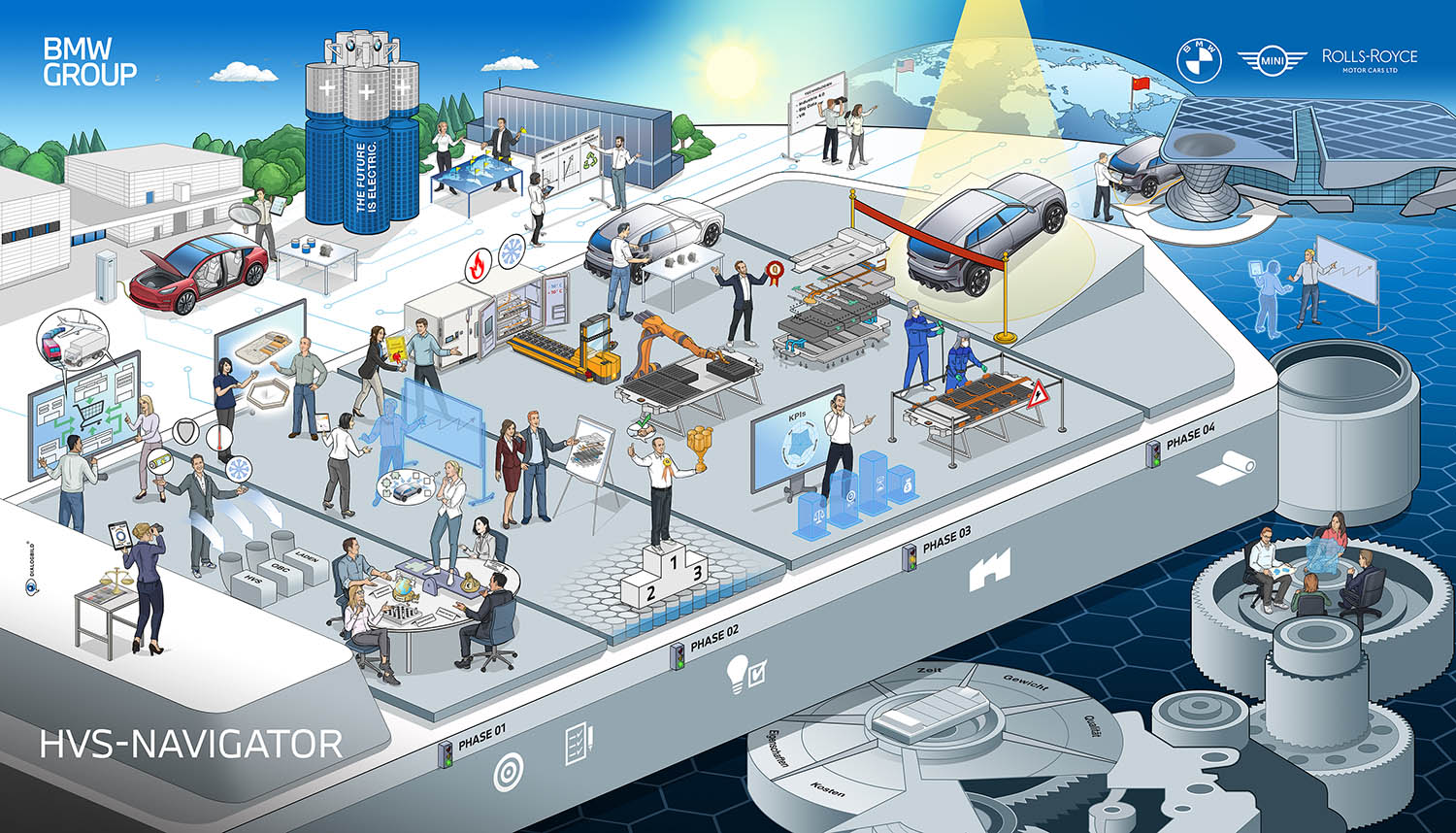
E-DRIVE DEVELOPMENT
With 31 production and assembly plants in 15 countries, the BMW Group is today one of the world's leading premium car manufacturers. The BMW Group is responding to the current age of electric mobility with clear and forward-looking visions of electric cars that are already thinking about the possibilities of tomorrow. The processes along the way are complex and require coordinated and targeted development steps.
The battery as a parameter for technical performance and e-mobile potential is constantly in focus. With DIALOGBILD, the BMW Group is designing a new navigator image to depict the "e-drive development" process chain, which is intended to accompany new employees during the onboarding phase. ...

DRIVE YOUR CAREER
INTERNAL TRADE FAIR "WARM WELCOME PROGRAM"
The "Drive Your Career" dialog picture is used at welcome events for new employees. It helps new employees understand their path through the company. Various career options and training opportunities are available.
THE BASICS
Since 1989, the BASICS have been the company's guiding principles, conveying the vision, values, and self-image of the company. At the same time, the BASICS serve to shape the company's future. As early as 1989, the guidelines included the obligation to respect the national origins of every employee, to observe national peculiarities, rules, and legal regulations, and to consider environmental protection in business processes. ...
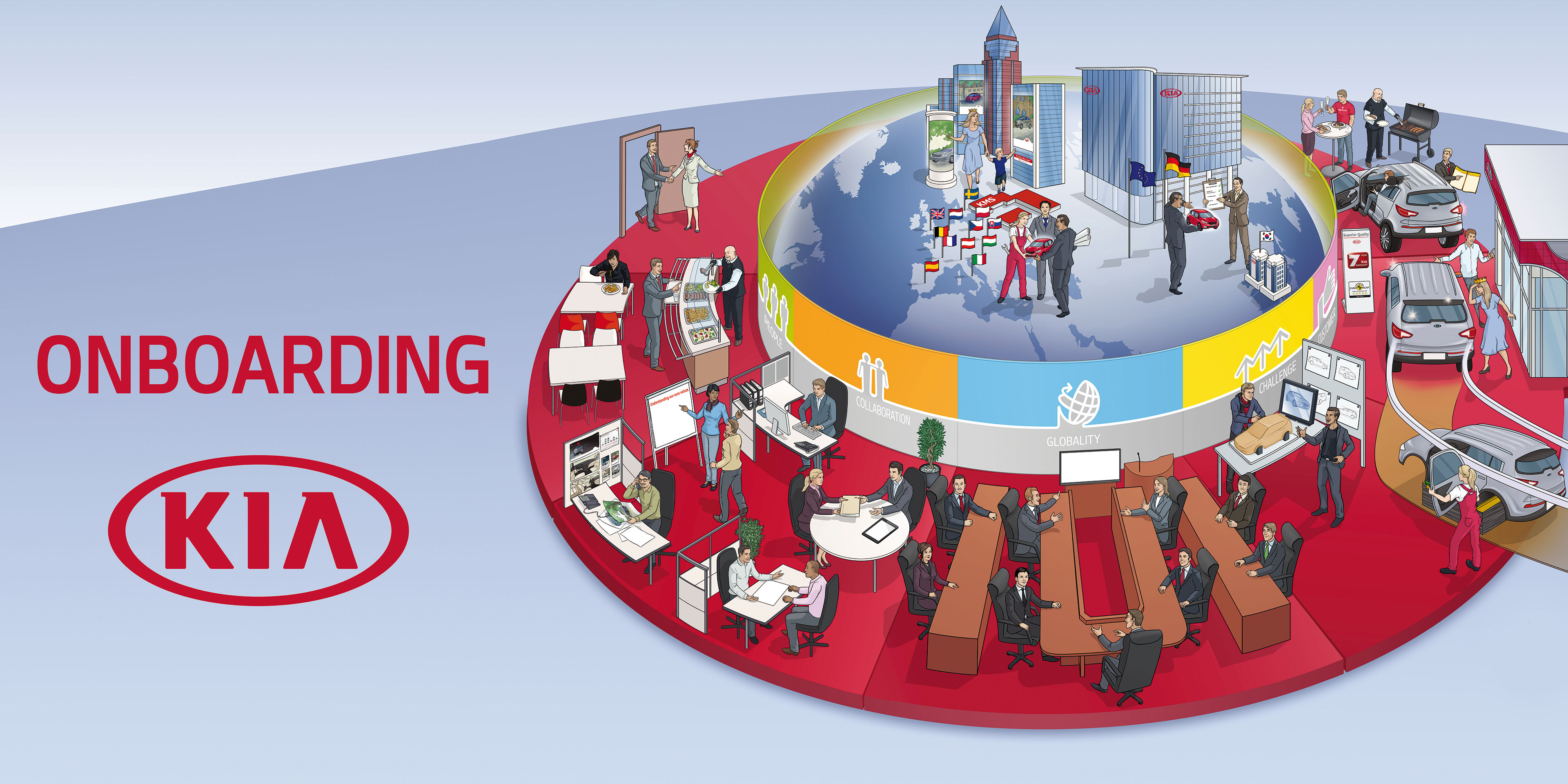
ON-BOARDING
Dialogbild developed an e-learning tool for onboarding processes at KIA Motors. Kia Motors uses the interactive dialog picture at welcome events for new employees. Shaped by the values of "People," "Collaboration," "Globality," "Challenge," and "Customer," the locations and individual departments of the European headquarters are presented. ...
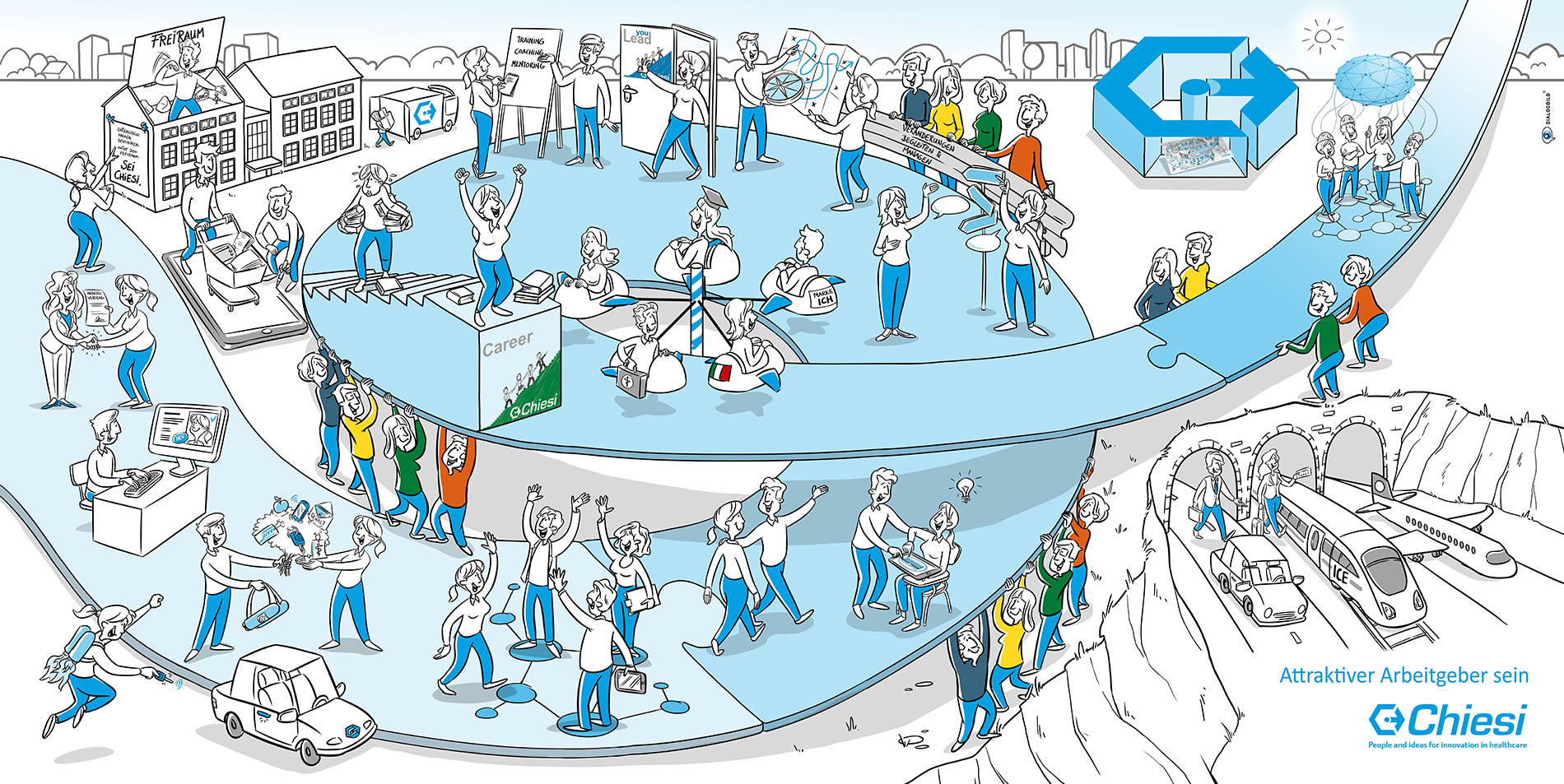
DECIDE.DO.WIN.
Use the freedom. Be Chiesi.
Chiesi is dedicated to the research, development and distribution of innovative prescription therapeutic products in the fields of respiratory, neonatology, transplantation and rare diseases. Founded in 1935, the company currently employs more than 4,800 people in 26 subsidiaries worldwide and sells its products in more than 70 countries. More than 300 of their Hamburg employees work in internal and external sales. ...
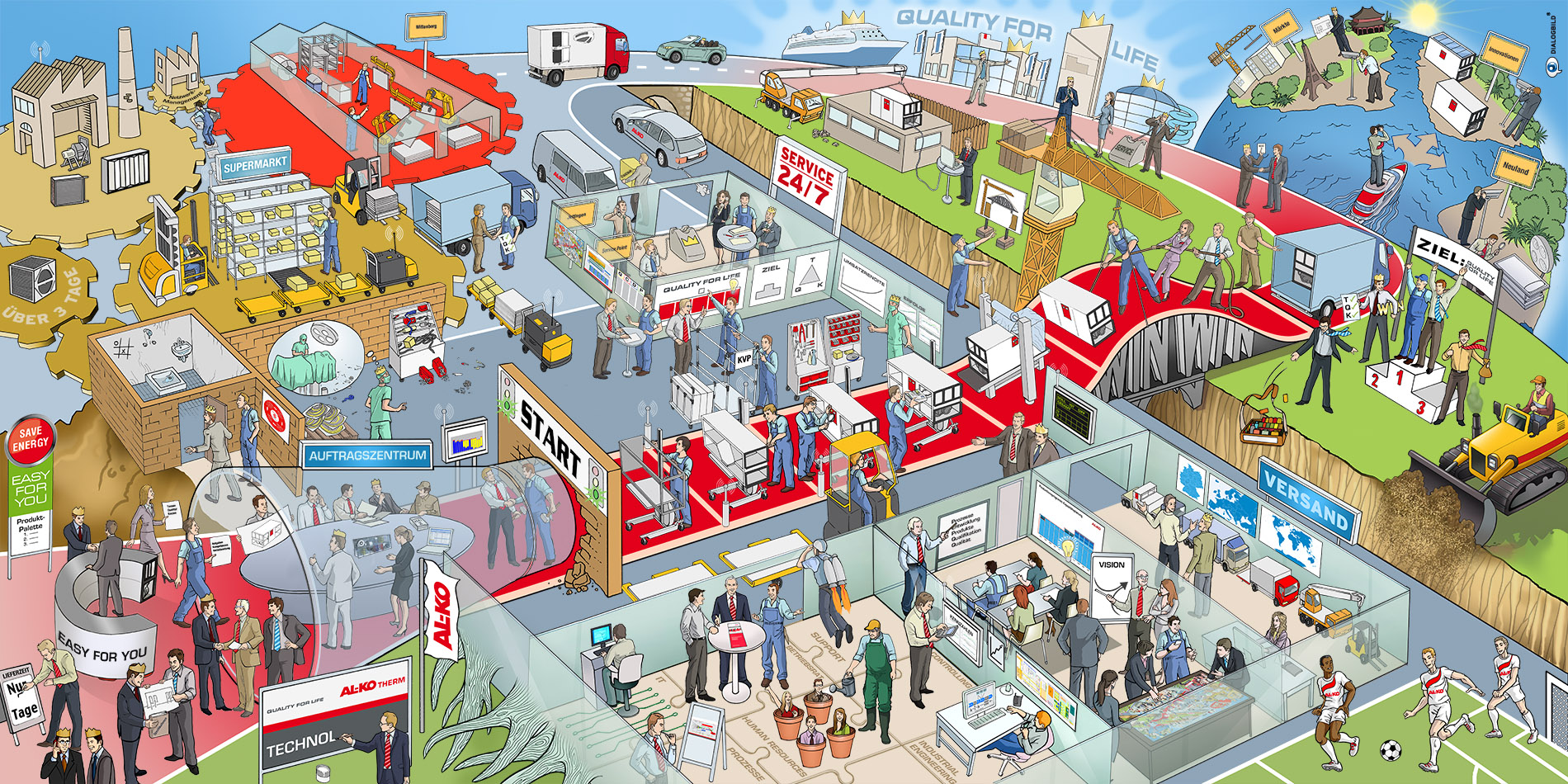
STRATEGY MAP: QUALITY FOR LIFE
THE MISSION STATEMENT
AL-KO Therm provides for a perfect climate with individualized, economic and ecological concepts. The enterprise is a specialist in ventilation equipment which is characterized by the latest technology, quality, reliability and consistently meeting customer requirements. It has developed sophisticated high tech facilities with the best room air quality in office buildings or hospitals and precisely controlled air in production facilities as well as for effective solutions for large commercial or leisure complexes. The most attention is given to the development of energy-economical technology for environmental discharge and cost reduction. ...
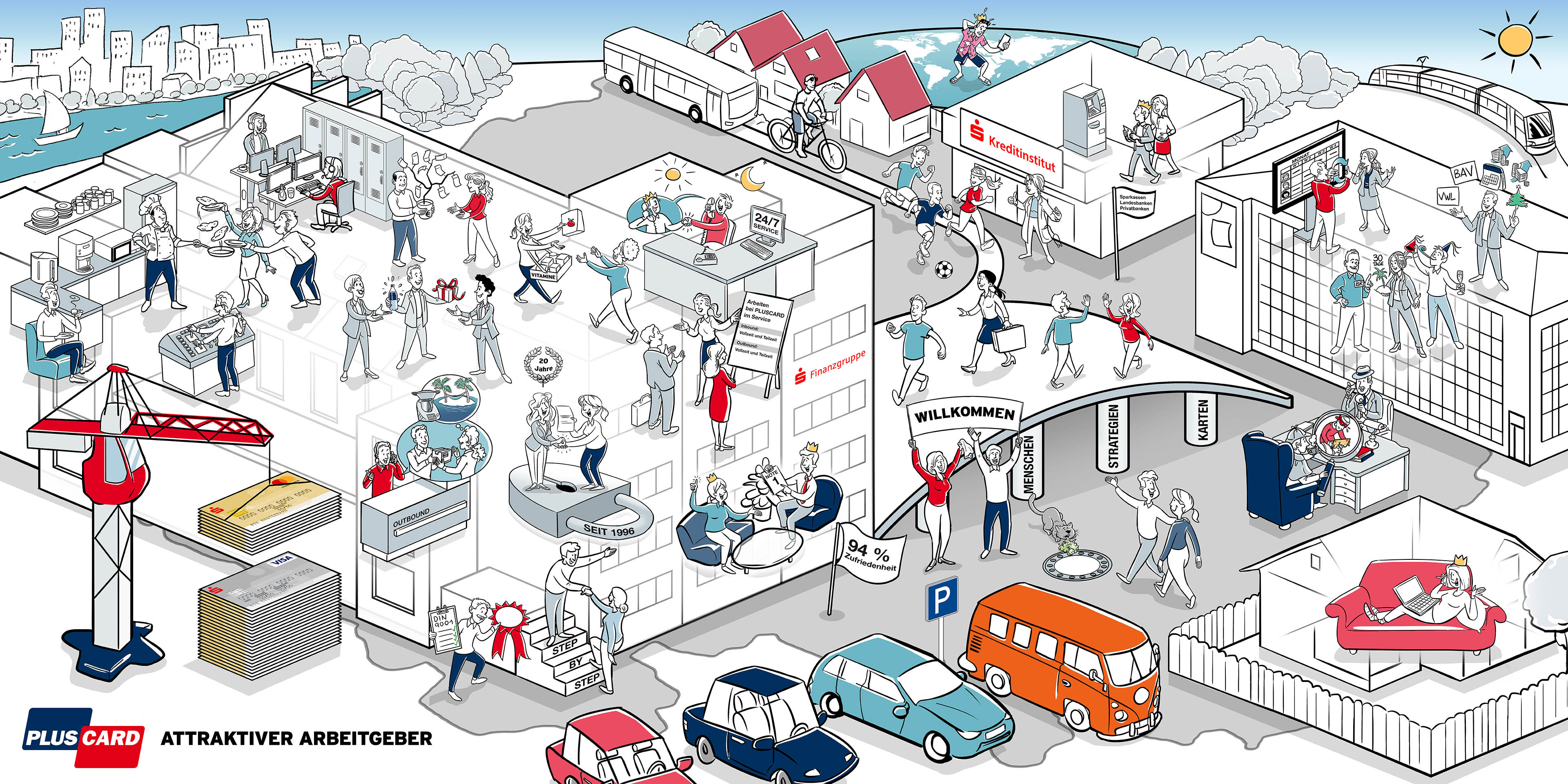
ATTRACTIVE EMPLOYER
THIS BENEFITS OFFERS PLUSCARD AS AN EMPLOYER
PLUSCARD is a service provider in the area of cards for savings banks and banks. Over 470 employees at three locations in Saarland are responsible for more than 6 million cards in the portfolio. Since the card business has been growing organically for many years, the questions about additional services from PLUSCARD are also growing. Furthermore, more and more transactions have to be processed and numerous legal regulations from the banking industry have to be implemented. As a result, there is an increasing need for new employees from various commercial and IT professions. ...
Frequently asked questions
What is the onboarding process?
The process describes the structured introduction of new employees to a company. It includes all the steps necessary to familiarize new employees with their tasks, the corporate culture, and work processes, and to ensure a successful start.
Why is the onboarding process important?
A good process is crucial for quickly integrating new employees and making them productive. It increases employee satisfaction, reduces turnover, and ensures that new team members feel comfortable and commit to the company long-term.
What phases does the onboarding process include?
The onboarding phases include:
- Before the first day of work: Preparation of work materials and information.
- The first day of work: Orientation and introduction to the team.
- The first few weeks: Induction and feedback sessions.
- Long-term integration: Development, goal setting, and performance reviews.
What is an onboarding checklist?
An onboarding checklist is a structured overview of all the steps that should be completed in the onboarding process. It helps organize the process and ensure nothing is forgotten. Important points include preparing work materials, introducing the new employee to the team, training, and feedback sessions.
How long does the onboarding process take?
The duration of the onboarding process varies depending on the company and position. It typically covers the new employee's first three to six months with the company, during which they are trained, familiarized with the company values, and integrated into the team.
What is the importance of the onboarding process?
The importance of the onboarding process lies in laying the foundation for the long-term satisfaction and productivity of new employees. A well-structured process helps avoid misunderstandings, ensures clear expectations, and promotes integration into the corporate culture.
Which tools help with onboarding?
Digital tools such as HR software and onboarding platforms can simplify and make onboarding more efficient. They offer automated checklists, digital training modules and enable clear communication between new employees and their managers.
How can the onboarding process be optimized?
To optimize the process, you can:
- Use a clear onboarding checklist.
- Use digital tools to automate the process.
- Provide a mentor or buddy for new employees.
- Obtain regular feedback to continuously improve the process.
How can Dialogbild help with the onboarding process?
Dialogbild supports companies in optimizing the onboarding process through visual communication. Our explanatory images and interactive training solutions help present complex information in a clear and engaging way. This allows new employees to be onboarded more quickly and better navigate the company.
How can I successfully onboard new employees?
A successful process should be well-organized, clearly communicated, and structured. Use checklists, offer mentoring support, and schedule regular feedback sessions to ensure new employees feel comfortable and understand their responsibilities.
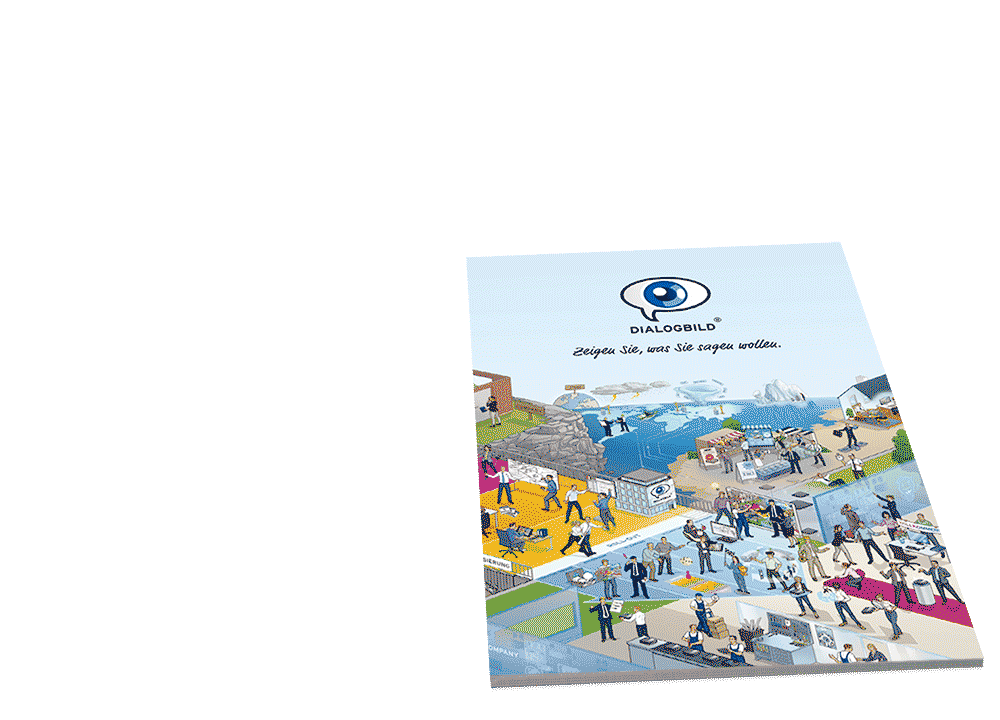 SELECT INFO PACKAGE
SELECT INFO PACKAGE